Celerity
Celerity's JournalThe Traitor Robert E. Lee Finally Gets His Just Desserts
A gargantuan monument to the rebel general will come down in the capital of the Confederacy.https://newrepublic.com/article/163557/bye-bye-robert-e-lee-richmond-statue

Last Thursday, the Virginia Supreme Court ruled that a statue honoring one of the greatest traitors the U.S. has ever produced can, at long last, come down. The state of Virginia may now begin to disassemble the behemoth sculpture honoring Confederate general Robert E. Lee that resides on the city’s fabled Monument Avenue, on which statuary to Confederate luminaries (and much later, after considerable discord, homegrown Black tennis superstar Arthur Ashe) has long stood. While the timeline for the ultimate removal is yet to be determined, as Gov. Ralph Northam said upon the announcement of the court’s ruling: “Today it is clear—the largest Confederate monument in the South is coming down.”
The impending removal of Lee’s statue is hardly a panacea for ongoing racial strife in the U.S., not least after the past few years of a president who fractured race relations in unprecedented ways. It is, however, a chance to dismantle the hagiography surrounding a man who commanded troops to slaughter tens of thousands of American soldiers, all in pursuit of shattering the U.S. while expanding the enslavement of millions of Americans. It is a chance to finally place Lee among the pantheon of our nation’s most malignant enemies.
The Richmond statue to Lee—clocking in at six stories high, and some twelve tons in weight—isn’t simply the most prominent piece of Confederate remembrance still standing in the United States. When the statue was initially erected in 1890, in front of over a hundred thousand onlookers, it represented a clear turn in the burgeoning growth of Lost Cause mythologizing. As historian David Blight writes in Race and Reunion, “More than ghosts emerged from the Richmond unveiling of 1890; a new, more dynamic Lost Cause was thrown into bold relief as well.” With the unveiling of Lee’s statue, mewling protests about Northern aggression had given way to muscular Confederate memorialization—with national reconciliation, added Blight, now “dependent upon the dead leader of the cause that lost.” Gone were the days of faction and friction among white Americans, replaced by a white supremacist comity and Jim Crow regime built under the shadow of Lee’s new statue—a state of affairs that would last decades, entrenching an American apartheid of which Lee would have heartily approved.
It’s not as if Lee’s rank treason is any kind of secret. Lee may not have been as histrionic as some of the human enslavers leading state governments into the Confederacy, or as colorful as some of the other former American military officials who elected to lead the Confederacy’s white supremacist insurrection. In many ways, that distance remains part of Lee’s ongoing appeal. Bathed in alleged honor, clad in supposed chivalry, Lee, for decades, has stood as man more sinned against than sinning—a supposed titan of gentlemanly warfare swept against his will into the tempest of his times; the avatar of a willingness to stand in defense of one’s principles, however blinkered (and treasonous) they may be. As W.E.B. Du Bois once wrote, “It is the punishment of the South that its Robert Lees … will always be tall, handsome and well-born. That their courage will be physical and not moral.” Du Bois is precisely correct. Rather than joining the hundreds of thousands of white Americans across the South who remained loyal to the U.S. during the Confederacy’s short-lived fratricide, Lee elected to join a traitorous band of effete, elite white Southerners bent on imploding the U.S., carving out new slavery territories across the American West and expanding chattel slavery as far as they could.
https://twitter.com/cjcmichel/status/1250230896399187970
snip
The consequences of neoliberal capitalism in eastern Europe
Sheri Berman argues that post-communist left embrace of economic as well as political liberalism allowed populists to target the latter.https://socialeurope.eu/the-consequences-of-neoliberal-capitalism-in-eastern-europe

Over the past decade or so the euphoria associated with the collapse of communism has turned to pessimism, as many once-promising democracies in eastern Europe have slid into illiberalism and even authoritarianism. Understanding why this happened is crucial not only for scholars of the region but supporters of democracy worldwide. Since east-European countries are wealthier today than in 1989, with citizens having access to products and conveniences they could only have dreamt of under communism, economic grievances are often dismissed as potential causes of support for right-wing populists and the democratic backsliding set in motion by them. But such reasoning rests on a simplistic understanding of the transition to, and the social and political consequences of, neoliberal capitalism. Although eastern Europe is of course distinctive in many ways, research by scholars from the region about these consequences has lessons for those trying to understand the role played by neoliberal capitalism in causing democracy’s problems in other parts of the world today.
Misleading assessments
A new book by Kristen Ghodsee and Mitchell Orenstein, Taking Stock of Shock, provides an excellent jumping-off point. Based on their own work and that of other east-European scholars, Ghodsee and Orenstein make clear how misleading assessments based on simple, aggregate measures of economic growth, gross domestic product and so on can be. They show that while east-European countries are indeed wealthier today than in 1989, getting there entailed immense economic suffering and social dislocation: the transition to capitalism generated ‘the largest and most enduring economic collapse to affect any world region in modern history’. In the more successful central-European countries this collapse was comparable to that experienced by the United States during the Great Depression. In other post-communist countries it was worse and lasted longer—in some cases for decades. During this period, on average, poverty increased by 23 percentage points and ‘in ten countries, including Poland, poverty rates increased by 49 percent or more before starting to decline’. Ghodsee and Orenstein found that ‘at peak misery in 1999, 45 percent of all the people in postcommunist countries … lived below the absolute poverty line of $5.50/day’.
Taking Stock of Shock not only details the suffering experienced by post-communist societies, on their way to becoming the relatively prosperous economies of today, but also makes clear that this was not equally shared. Income and wealth inequality exploded and deep divisions—between urban and rural areas, educated elites and workers, old and young—developed as a result of the transition. This was particularly dislocating, since before 1989 eastern Europe had been among the most equal regions of the world. Moreover, as Ghodsee and Orenstein note, ‘it is one thing to be thrust into deep poverty for the first time in your life. It is quite another thing to be thrust into poverty when some of the people around you are enjoying previously inconceivable levels of personal wealth.’ This they say left ‘deep scars’ on ‘the collective psyche’.
Social dislocation
Moreover, it is not just the traumatic economic consequences of the transition to capitalism that a focus on the relatively high contemporary GDP enjoyed by east-European countries today misses. As Taking Stock of Shock makes clear, the social dislocation has been immense. Perhaps the most obvious manifestation is a demographic crisis of historic proportions. After 1989 emigration from eastern Europe was ‘unprecedented in speed, scale and persistence compared with emigration experiences elsewhere’. This was accompanied by a collapse in fertility and a surge in mortality. Homicide (and crime more generally) shot up, along with binge-drinking, heart disease, suicide and other ‘deaths of despair’, particularly among middle-aged men living outside big cities. Cumulatively, many east-European countries experienced population declines akin to, or even greater than, those experienced by countries involved in major wars. Even though GDP recovered in the US and European countries after the Great Depression, all scholars of the period accept that the associated economic suffering had immense political consequences. In some countries, of course, it triggered the collapse of democracy. That similar if not greater economic suffering, along with the profoundly disruptive social changes experienced by east-European populations since 1989 would not have political consequences is unimaginable.
snip
Left-wing austerity during international crises--it's the financial markets, stupid!
Surprisingly, left governments adopted more conservative fiscal policies than right governments in recent economic crises. These appear to have dire electoral consequences.https://socialeurope.eu/left-wing-austerity-during-international-crises-its-the-financial-markets-stupid

Left and right governments used to pursue distinct macroeconomic policies, with left governments associated with fiscal profligacy (and redistributive policies). Over the past few decades, however, left and right have converged, with no notable differences in their fiscal policies. Even in times of crisis, when we might expect divergence, left and right fiscal policies appear indistinguishable. For instance, in reaction to the global financial crisis of 2007-08, both left and right governments endorsed austerity policies. While the news is already bad for the core constituencies of left parties, the reality is even worse. My recent study scrutinises this convergence. It focuses on the role of government partisanship in fiscal-policy responses to international economic crises in advanced democracies. I find that, over the course of the business cycle in the two last crises, left governments pursued more restrictive fiscal policies than their right-wing counterparts. This amounts to no less than a reversal of traditional partisan effects.
Financial-market constraints
The switch in partisan effects is caused by constraints imposed by financial markets. My analysis shows that market actors were concerned about deficits in 1990-94 and about deficits and spending in 2008-13. Specifically, statistical analysis suggests that (indebted) left governments were less likely to engage in fiscal stimulus than right governments during the protracted early-1990s recession. During the subsequent crisis, bond-market investors compelled indebted left governments, by comparison with their right-wing counterparts, to stimulate less forcefully by way of spending increases in 2008-09 and consolidate more forcefully by way of cuts during 2011-12. Meanwhile, investors more strongly constrained left governments to consolidate by reining in spending than did right governments in the (fragile) recovery of 2010.
Fiscal policy outputs under different constellations of partisanship and debt in 2011-12
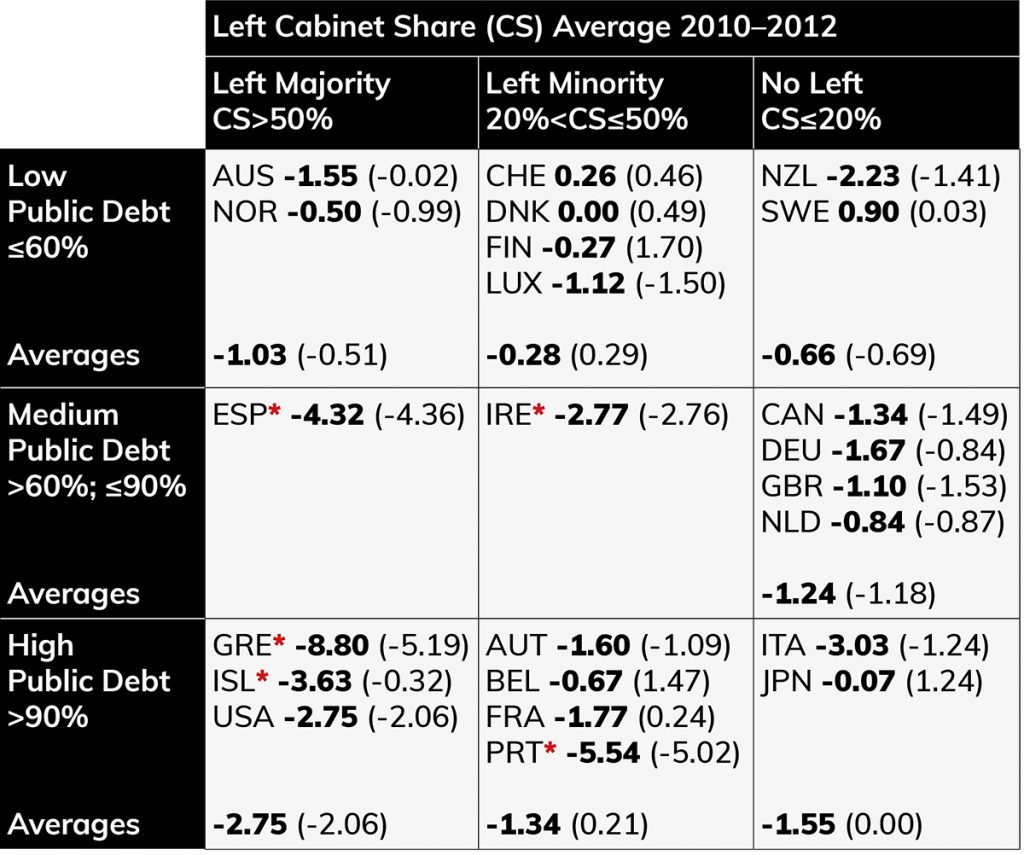
Size of fiscal stimulus (as % GDP) in bold; positive numbers indicate movement towards deficits. Size of spending increases (as % GDP) in parenthesis. US Democrats coded as left parties. Public debt measured in 2010. Averages (per quadrant) exclude Greece, Iceland, Ireland, Portugal and Spain under IMF/EU bailout (*).
Government reactions in the early 1990s and late 2000s / early 2010s set them apart from responses to earlier crises. If anything, fiscal-policy responses in the early 1980s were reminiscent of traditional partisan patterns. Left governments stimulated more during downturns, although the models are statistically insignificant. They also consolidated less during the early recovery of 1984, irrespective of a country’s exposure to financial markets. Low levels of indebtedness and limited capital-market openness in the early 1980s explain the absence of reversed partisan effects. Financial-market constraints are stronger for left than right governments at high debt level. This is because left governments have lower credibility as sovereign debtors. Bond-market actors are concerned about debt financing, defaults or incentives to inflate away public debt. In the view of market participants, these are the trademark of left governments. To maintain access to borrowing at similar rates to right governments during debt crises, left governments are compelled to impose more austerity. It’s the price left-wing governments must pay for the ‘credibility gap’.
Fiscal policy central
Fiscal policy is not only crucial for economic stability; it also reflects a government’s objectives, as enshrined in the national budget. With the advent of democratic capitalism, the economic dimension has been the main axis along which the political space is structured. It has defined distinguished party positions, with left parties more in favour of state intervention. The core constituencies of left parties are more supportive of government redistribution. Conversely, individuals believe that left parties champion such policies more than right parties. The legitimacy of the party system and the democratic order itself still hinge on traditional partisan effects. The ideological mix with political partisanship during hard times is certainly confusing to ordinary citizens.
Voting with their feet......
snip
Panjshir Valley, last resistance holdout in Afghanistan, falls to the Taliban
https://www.washingtonpost.com/world/2021/09/06/afghanistan-kabul-taliban-updates/
The Taliban on Monday seized Panjshir province, a restive mountain region that was the final holdout of resistance forces in the country, cementing its total control over Afghanistan a week after U.S. forces departed the country. Taliban spokesman Zabihullah Mujahid said in a statement that the Islamist group had “completely conquered” the Panjshir Valley. “With the help of Allah, and support of our people, the Islamic Emirate has taken complete control. Our last efforts for establishing peace and security in the country have given results," he said.
A senior official of the National Resistance Front of Afghanistan, who spoke on the condition of anonymity due to the sensitivity of the matter, confirmed that the Taliban had taken over. “Yes, Panjshir has fallen. Taliban took control of government offices. Taliban fighters entered into the governor’s house,” the person said. Ahmad Massoud, head of the resistance, is “at [a] safe place,” the official said, adding that Amrullah Saleh, another senior anti-Taliban leader who had served as vice president of the ousted government, had fled for Tajikistan.
In a video recorded on Friday, Saleh said reports at the time that he had fled the country were “totally baseless,” although he added that the situation was “difficult.” Some members of the resistance denied that the Taliban had occupied Panjshir. The National Resistance Front said in a Facebook post Monday that its forces were “present in all strategic positions across the valley to continue the fight.”
“The people of Afghanistan should be assured that the resistance will continue until the freedom and justice is achieved by God’s help,” the organization said. The Taliban’s victory followed an extended period of heavy fighting between resistance guerrillas and Afghanistan’s new rulers. Resistance fighters set up a base in the Panjshir Valley days after the Taliban seized control of Kabul last month, convinced that they could hold a valley that was never conquered by the Taliban in the 1990s nor by the Soviet Union in its nearly decade-long occupation in the 1980s.
snip
Reports of vaccines' decline have been greatly overstated.

What We Actually Know About Waning Immunity
https://www.theatlantic.com/science/archive/2021/09/waning-immunity-not-crisis-right-now/619965/

Vaccines don’t last forever. This is by design: Like many of the microbes they mimic, the contents of the shots stick around only as long as it takes the body to eliminate them, a tenure on the order of days, perhaps a few weeks. What does have staying power, though, is the immunological impression that vaccines leave behind. Defensive cells study decoy pathogens even as they purge them; the recollections that they form can last for years or decades after an injection. The learned response becomes a reflex, ingrained and automatic, a “robust immune memory” that far outlives the shot itself, Ali Ellebedy, an immunologist at Washington University in St. Louis, told me. That’s what happens with the COVID-19 vaccines, and Ellebedy and others told me they expect the memory to remain with us for a while yet, staving off severe disease and death from the virus at extraordinary rates. That prediction might sound incompatible with recent reports of the “declining” effectiveness of COVID-19 vaccines, and the “waning” of immunity. According to the White House, we’ll all need boosters very, very soon to fortify our crumbling defences. The past few weeks of news have made it seem as though we’re doomed to chase SARS-CoV-2 with shot after shot after shot, as if vaccine protections were slipping through our fingers like so much sand.
The reality of the situation is much more complicated than that. Despite some shifting numbers, neither our vaccines nor our immune systems are failing us, or even coming close. Vaccine effectiveness isn’t a monolith, and neither is immunity. Staying safe from a virus depends on host and pathogen alike; a change in either can chip away at the barriers that separate the two without obliterating them, which is exactly what we’re seeing now. As the hyper-contagious Delta variant continues to blaze across the country and much of the world, more vaccinated people are encountering the virus and occasionally getting infected enough to trip a coronavirus test. But our shots are still guarding against disease and death—the standard our shots were meant to meet, and the most crucial element of making the virus “a much more manageable threat,” Müge Çevik, a medical virologist at the University of St. Andrews, told me. “We need to have much more realistic expectations of these vaccines” and what they can teach our immune systems to do, Çevik said. The good news is, it’s quite a lot. Immune responses don’t last forever. They’re supposed to wane, and the fact that they do works to our advantage. The first time someone meets a virus or a vaccine, defensive cells must scramble. A wave of fast but imprecise fighters—members of the innate immune system—rushes in to wall off the assailant, buying time for the body’s more sophisticated sharpshooters to gather their wits. This latter group, which makes up the body’s adaptive arm, takes several days to really fire up.
But the wait is worth it: After a couple of weeks, the blood is rife with antibodies—molecules, made by B cells, that can sequester viruses outside cells—and aptly named killer T cells, which can blow up cells that have already been infected. Eventually, as the infectious threat passes, our immune response contracts; frontline B and T cells, no longer needed in their amped-up state, start to die off. Antibody levels—one of the easiest immune metrics to measure—slip downward over the course of several months, before roughly levelling off. That’s perfectly normal, Deepta Bhattacharya, an immunologist at the University of Arizona, told me. “You have a big increase at the beginning, then a decline.” Consider the alternative: If humans never quieted any of the immunological furore that follows infections and simply kept accumulating antibodies for every pathogen we came across, we’d all have burst a long time ago. Even attempting to maintain that kind of immune reservoir “would require so much energy—I don’t even know where you’d keep all those cells,” says Marion Pepper, an immunologist at the University of Washington. A downtick in antibody levels can come with consequences. Antibodies are among the few immune actors capable of waylaying a virus before it infiltrates a cell; when present in high-enough amounts, they can quash a developing infection. But where a virus is abundant and speedy and antibodies are relatively scarce, the body’s defenses are much more liable to crack, which is why protection against infection will be the first to erode.
This issue might be especially pronounced after receipt of a COVID-19 vaccine, which is delivered into an arm muscle. Injected vaccines are ace at prompting the production of IgG antibodies in the blood; they’re less good at coaxing out the IgA antibodies that patrol the moist mucosal linings of the nose and mouth and corral respiratory viruses at their natural point of entry. IgG antibodies are good travellers and can eventually flock to the site of a growing infection. That takes time, though, and when fewer of them are bopping about, their eventual arrival may not be enough to pen the pathogen in place. Antibody levels will taper in the months following vaccination or infection, but that doesn’t mean they plummet to zero, Bhattacharya told me. Although most of the B cells die off, some stick around in the bone marrow and keep churning out the virus-fighting molecules at more modest, but still detectable, levels. Though the life span of these long-lived B cells can vary, some studies have hinted that they’re capable of persisting as antibody factories for decades. Another population of immune cells, memory B cells, meanders around the body like sleeper agents, ready to resume making its antibodies whenever necessary. All of these B cells can continue to broaden and intensify their virus-vanquishing powers for months after a vaccine or pathogen leaves the body, in a sped-up form of antibody evolution. “The quality of antibodies in the body improves over time,” Bhattacharya said. “It takes way fewer of them to protect you.”
snip
Why I Won't Support Spending Another $3.5 Trillion
Amid inflation, debt and the inevitability of future crises, Congress needs to take a strategic pause.https://www.wsj.com/articles/manchin-pelosi-biden-3-5-trillion-reconciliation-government-spending-debt-deficit-inflation-11630605657

The nation faces an unprecedented array of challenges and will inevitably encounter additional crises in the future. Yet some in Congress have a strange belief there is an infinite supply of money to deal with any current or future crisis, and that spending trillions upon trillions will have no negative consequence for the future. I disagree. An overheating economy has imposed a costly “inflation tax” on every middle- and working-class American. At $28.7 trillion and growing, the nation’s debt has reached record levels. Over the past 18 months, we’ve spent more than $5 trillion responding to the coronavirus pandemic. Now Democratic congressional leaders propose to pass the largest single spending bill in history with no regard to rising inflation, crippling debt or the inevitability of future crises. Ignoring the fiscal consequences of our policy choices will create a disastrous future for the next generation of Americans. Those who believe such concerns are overstated should ask themselves: What do we do if the pandemic gets worse under the next viral mutation? What do we do if there is a financial crisis like the one that led to the Great Recession? What if we face a terrorist attack or major international conflict? How will America respond to such crises if we needlessly spend trillions of dollars today?
Instead of rushing to spend trillions on new government programs and additional stimulus funding, Congress should hit a strategic pause on the budget-reconciliation legislation. A pause is warranted because it will provide more clarity on the trajectory of the pandemic, and it will allow us to determine whether inflation is transitory or not. While some have suggested this reconciliation legislation must be passed now, I believe that making budgetary decisions under artificial political deadlines never leads to good policy or sound decisions. I have always said if I can’t explain it, I can’t vote for it, and I can’t explain why my Democratic colleagues are rushing to spend $3.5 trillion. Another reason to pause: We must allow for a complete reporting and analysis of the implications a multitrillion-dollar bill will have for this generation and the next. Such a strategic pause will allow every member of Congress to use the transparent committee process to debate: What should we fund, and what can we simply not afford? I, for one, won’t support a $3.5 trillion bill, or anywhere near that level of additional spending, without greater clarity about why Congress chooses to ignore the serious effects inflation and debt have on existing government programs. This is even more important now as the Social Security and Medicare Trustees have sounded the alarm that these life-saving programs will be insolvent and benefits could start to be reduced as soon as 2026 for Medicare and 2033, a year earlier than previously projected, for Social Security.
Establishing an artificial $3.5 trillion spending number and then reverse-engineering the partisan social priorities that should be funded isn’t how you make good policy. Undoubtedly some will argue that bold social-policy action must be taken now. While I share the belief that we should help those who need it the most, we must also be honest about the present economic reality. Inflation continues to rise and is bleeding the value of Americans’ wages and income. More than 10.1 million jobs remain open. Our economy, as the Biden administration has correctly pointed out, has reached record levels of quarterly growth. This positive economic reality makes clear that the purpose of the proposed $3.5 trillion in new spending isn’t to solve urgent problems, but to re-envision America’s social policies. While my fellow Democrats will disagree, I believe that spending trillions more dollars not only ignores present economic reality, but makes it certain that America will be fiscally weakened when it faces a future recession or national emergency. In 2017, my Republican friends used the privileged legislative procedure of budget reconciliation to rush through a partisan tax bill that added more than $1 trillion to the national debt and put investors ahead of workers. Then, Democrats rightfully criticized this budgetary tactic.
Now, my Democratic friends want to use this same budgetary tactic to push through sweeping legislation to make “historic investments.” Respectfully, it was wrong when the Republicans did it, and it is wrong now. If we want to invest in America, a goal I support, then let’s take the time to get it right and determine what is absolutely necessary. Many in Washington have convinced themselves we can add trillions of dollars more to our nearly $29 trillion national debt with no repercussions. Regardless of political party, elected leaders are sent to Washington to make tough decisions and not simply go along to get along. For those who will dismiss my unwillingness to support a $3.5 trillion bill as political posturing, I hope they heed the powerful words of Adm. Mike Mullen, a former chairman of the Joint Chiefs of Staff, who called debt the biggest threat to national security. His comments echoed the fear and concern I’ve heard from many economic experts I’ve personally met with. At a time of intense political and policy divisions, it would serve us well to remember that members of Congress swear allegiance to this nation and fidelity to its Constitution, not to a political party. By placing a strategic pause on this budgetary proposal, by significantly reducing the size of any possible reconciliation bill to only what America can afford and needs to spend, we can and will build a better and stronger nation for all our families.
Bruce Hornsby And The Range - The Way It Is [extended retro remix]
Bruce Hornsby and The Range - The Way It Is (Dj Patiño 12" Remix)
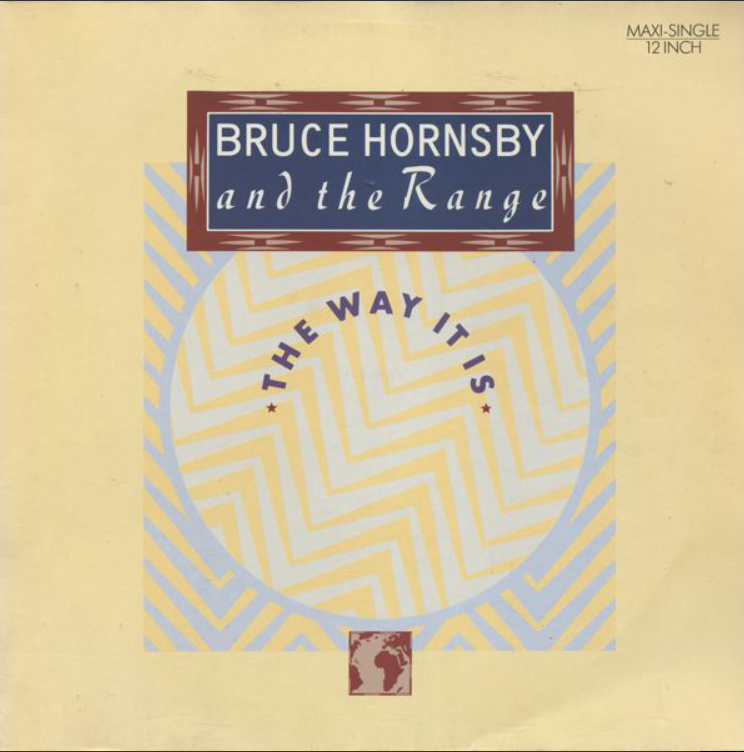
I think part of the motivation for the TX aborta-vigilante law is to disabuse libs from moving
there and to make many more flee the state, thus helping to ensure continued Rethug electoral dominance.
The Rethugs are also banking on a shedload of the Hispanic population to slide in increasing numbers to voting conservative, especially as so many are converting to Evangelical conservative Christian churches, both large and small.
For the first time ever in the US, Hispanics are now less than 50% Catholic.
The Fastest-Growing Group of American Evangelicals (Latinx)
A new generation of Latino Protestants is poised to transform our religious and political landscapes.
https://www.theatlantic.com/culture/archive/2021/07/latinos-will-determine-future-american-evangelicalism/619551/

In 2007, when Obe and Jacqueline Arellano were in their mid-20s, they moved from the suburbs of Chicago to Aurora, Illinois, with the dream of starting a church. They chose Aurora, a midsize city with about 200,000 residents, mostly because about 40 percent of its population is Latino. Obe, a first-generation Mexican American pastor, told me, “We sensed God wanted us there.” By 2010, the couple had “planted a church,” the Protestant term for starting a brand-new congregation. This summer, the Arellanos moved to Long Beach, California, to pastor at Light & Life Christian Fellowship, which has planted 20 churches in 20 years. Their story is at once singular and representative of national trends: Across the United States, more Latino pastors are founding churches than ever before, a trend that challenges conventional views of evangelicalism and could have massive implications for the future of American politics.
Latinos are leaving the Catholic Church and converting to evangelical Protestantism in increased numbers, and evangelical organizations are putting more energy and resources toward reaching potential Latino congregants. Latinos are the fastest-growing group of evangelicals in the country, and Latino Protestants, in particular, have higher levels of religiosity—meaning they tend to go to church, pray, and read the Bible more often than both Anglo Protestants and Latino Catholics, according to Mark Mulder, a sociology professor at Calvin University and a co-author of Latino Protestants in America. At the same time, a major demographic shift is under way. Arellano, who supports Light & Life’s Spanish-speaking campus, Luz y Vida, told me, “By 2060, the Hispanic population in the United States is expected to grow from 60 million to over 110 million.” None of this is lost on either Latino or Anglo evangelical leadership: They know they need to recruit and train Latino pastors if they’re going to achieve what Arellano describes as “our vision to see that the kingdom of God will go forward and reach more people and get into every nook and cranny of society.”
The stakes of intensified Latino evangelicalism are manifold, and they depend on what kind of evangelicalism prevails across the country. The term evangelical has become synonymous with a voting bloc of Anglo cultural conservatives, but in general theological terms, evangelicals are Christians who believe in the supremacy of the Bible and that they are compelled to spread its gospel. Some Christians who identify with the theological definition fit the political stereotype, but others don’t. That’s true among evangelical Latino leaders too—they have very different interpretations of how the teachings of Jesus Christ call them to act. Every pastor I spoke with told me that they want to see more Latino pastors in leadership positions, and they each had a different take on what new Latino leadership could mean for the future of evangelicalism. When we spoke over the phone, Samuel Rodriguez, the president of the National Hispanic Christian Leadership Conference and the pastor of New Season Worship, in Sacramento, California, told me, “We’re not extending our hand out, asking, ‘Can you help us plant churches?’ We’re coming to primarily white denominations and going, ‘You all need our help.’ This is a flipping of the script.”
Although Latino congregations are too diverse to characterize in shorthand, one of the few declarative statements that can be made about Latino Protestants is a fact borne out with numbers: They are likelier than Latino Catholics to vote Republican. The expansion of Latino evangelicalism bucks assumptions that Democrats and progressives will soon have a clear advantage as the white church declines and the Hispanic electorate rises. “Some counterintuitive things that have happened [in our national politics] would make more sense if we better understood the faith communities that exist within Latinx Protestantism,” Mulder told me over the phone, alluding to the differing perspectives Latinos hold on many issues, including immigration, and how more Latinos voted for former President Donald Trump in 2020 than in 2016. According to the Public Religion Research Institute, Protestant affiliation correlated more with Hispanic approval of Trump’s job in office than age or gender.
snip
excellent longform article, much more at the top link
In 2014, 11% of Latinos were Evangelicals.
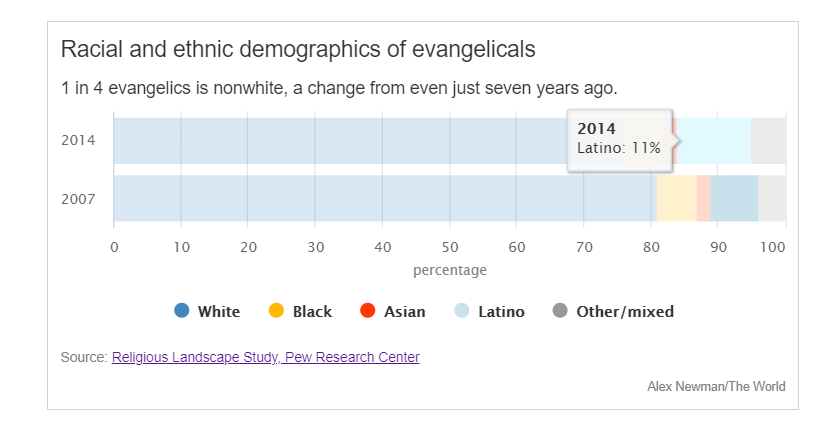
Now, the latest numbers from Pew show it is up to 19% (in less that 7 years)
It is likely over 20% now and growing rapidly, driven by the younger gens,
less than half of Latinos in the US are now Catholic, which is pretty amazing
https://www.pewforum.org/religious-landscape-study/racial-and-ethnic-composition/latino/
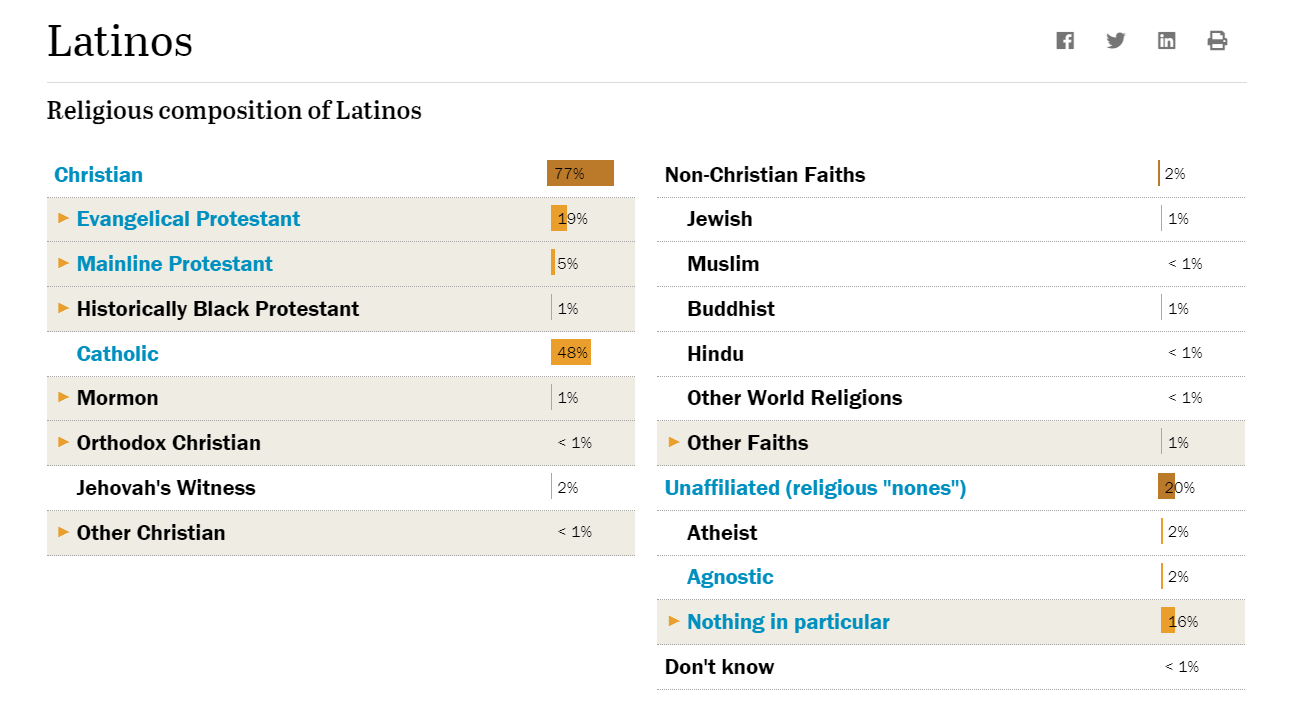
Here's How You Can Help Shut Down the Vile Website for Snitching on People Who Get Abortions in TX
The site was started for Texans to report violations of the state's "heartbeat bill."https://gizmodo.com/here-s-how-you-can-help-shut-down-the-vile-website-for-1847557293
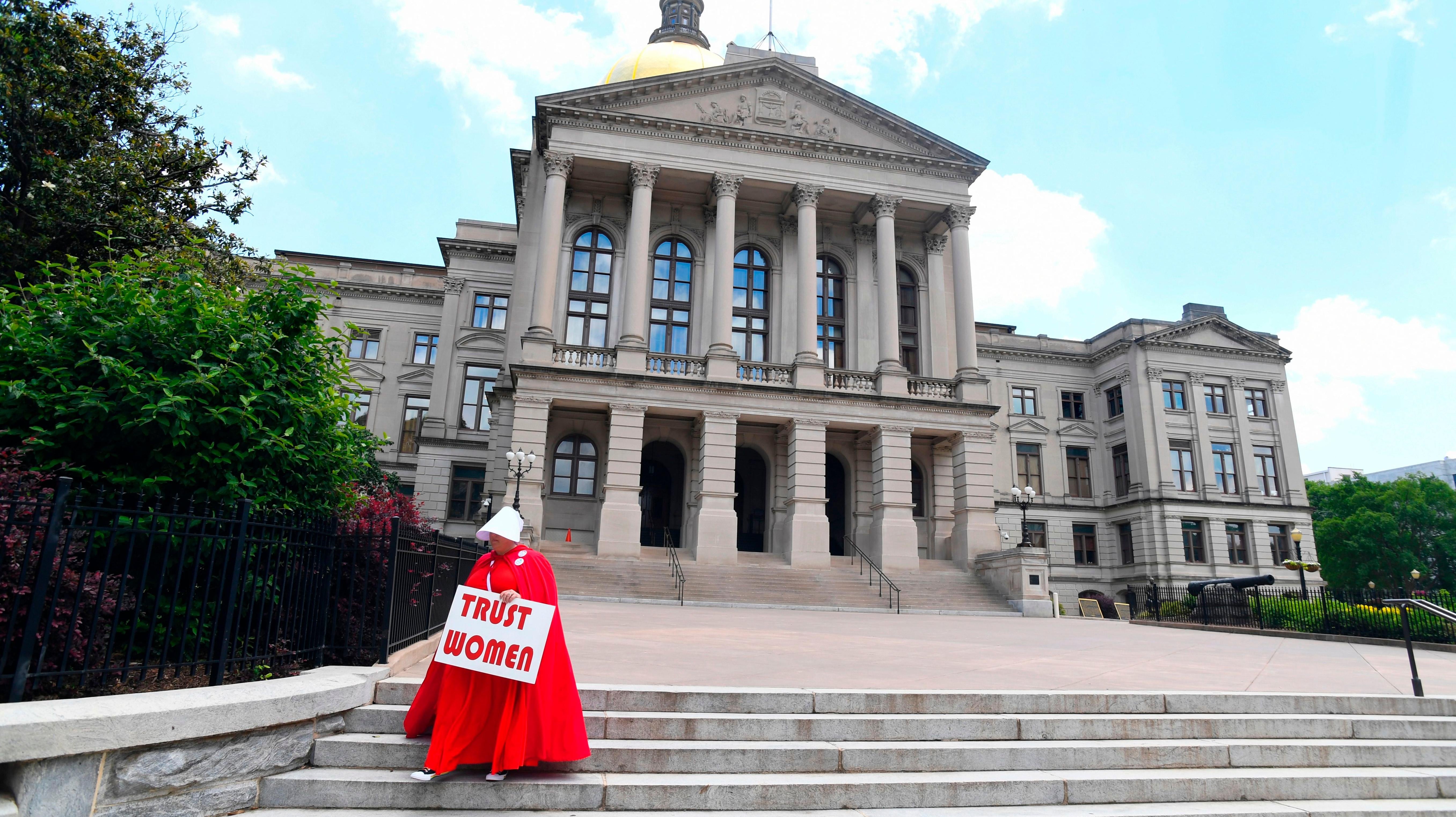
Even if you don’t live in Texas, you’ve likely heard about the state’s draconian abortion restrictions that officially went into effect on Wednesday. The so-called “Heartbeat Bill,” aka Senate Bill 8, makes it fully illegal for anyone—friends, family, doctors—across Texas to help women access an abortion in the state after their sixth week of pregnancy. You might have also seen the digital tipline that’s been set up to snitch on anyone violating the new law. The site was launched about a month ago by Texas Right To Life, a well-funded player in the world of anti-abortion politics. “Any Texan can bring a lawsuit against an abortionist or someone aiding and abetting an abortion after six weeks,” the website reads. “If these individuals are proved to be violating the law, they have to pay a fine of at least $10,000.” It’s worth noting here that because “aiding and abetting” is such a vague term, others have used the impending law to not only justify going after the doctors or clinicians performing these medical procedures but anyone who helps women get an abortion in any way. This includes driving a friend to the clinic, or lending someone money so they can get an abortion they can’t afford on their own. As you might expect with a tipline like this, people didn’t waste any time flooding the line with the vilest stuff you can think of: fake claims, furry porn, pictures of Shrek, you name it.
https://twitter.com/sgtballsisback/status/1429078735614062599
https://twitter.com/starlitpaths/status/1429433441183932423
Unfortunately, overloading the site with pictures of everyone’s favorite ogre wasn’t enough to knock it from the web, nor were the multiple denial-of-service attacks that slammed the site on the eve before the bill was set to go into action. But there is another route people can take: pleading with the site’s hosting provider. In this case, the registrar is GoDaddy—a company that’s historically known for being kind of terrible all around, but also one with a slew of rules for what its sites can be used for. In the company’s terms of service for users, GoDaddy mandates that its site owners cannot use a GoDaddy-hosted site to:

The ToS also states that GoDaddy’s customers cannot use its platform in a manner that “violates the privacy or publicity rights of another User or any other person or entity, or breaches any duty of confidentiality that you owe to another User or any other person or entity.” In either case, a site solely set up to out people who try to help someone attain a sensitive, stigmatized medical procedure probably fall under this domain. GoDaddy has its own specific tipline set up for users to reach when they see a site falling afoul of the company’s privacy rules: privacy@godaddy.com. People can also file out an abuse report with the platform, and let GoDaddy know that they’ve come across “content that displays personal information.” While the examples that GoDaddy gives in the form are sites listing people’s social security or credit card numbers, the Texas tipline is a pretty clear privacy violation of a different sort.
Aside from violating the privacy of god knows how many women, along with their friends, family, and doctors, the site also apparently violates the privacy of people submitting tips. A Gizmodo analysis of the webpage for submitting tips found that when these memos are “anonymously” submitted, the site covertly harvests the IP address of whoever submits the tip via a hidden field. It’s unclear what stance GoDaddy plans to take this new abortion tipline, and the company hasn’t responded to multiple requests for comment. For now, it looks like our best line of defense is filing those reports until the company can’t take it anymore.
snip
Texas Abortion Ban And The Rise Of Lawsuit Bounty Hunters
Texas just passed the most restrictive anti-abortion law in the nation. But it’s far worse than any ordinary ban.https://thebanter.substack.com/p/texas-abortion-ban-and-the-rise-of

WASHINGTON, DC -- The Texas legislature, dominated by white male Trump disciples, passed the most restrictive anti-abortion law in the nation this week, effectively banning the procedure. But it’s far worse than any ordinary ban. Not only is the (constitutional, for now) medical treatment banned after six weeks in Texas -- without exceptions for rape and incest, by the way -- but the means of enforcement creates a population of snitches, vigilantes, looky-loos, ambulance-chasers, and bounty hunters relentlessly pursuing pregnant women and their doctors. In other words, rather than reporting abortions after six weeks to law enforcement, the statute allows citizens to sue anyone making money from the abortion. And the suits can award the litigant a minimum of $10,000 -- again, minimum $10,000. That means doctors, nurses, or even the Uber driver who chauffeurs a patient to the OB/GYN can be sued for enabling abortions. During an era in which everyone’s up in everyone else’s business most of the time, especially in public places where unspooled freakouts are becoming a daily event, this law Thanos-snaps into existence money-motivated Karens stalking and doxxing pregnant women in the hopes of a gigantic pay-day. If they can prove it.
Spying on OB/GYNs will be commonplace -- that is, commonplace for the doctors who don’t decide to pack up their practices and move to states where they won’t be perpetually swarmed by money-grubbing scolds and fire-eating activists. All of the morons who go around incorrectly citing The Health Insurance Portability and Accountability Act of 1996 (HIPAA) as an excuse for why there shouldn’t be vaccine mandates will surely have no problem staking out the entrances to OB/GYNs across the state, demanding to know the medical business of every women entering the doctor’s office. Why? There’s fetuses to save and money to be made -- not necessarily prioritized in that order. Muddying the waters even further is the obscene reality that most women don’t even realize they’re pregnant at six weeks, just two weeks after one missed period. So, the question of the hour is: how will these pious soon-to-be bounty hunters even know whether it’s been six or seven or 10 weeks? The only way to know for sure is to check the patient’s medical record and, yes, such a move would be a massive violation of HIPAA. I suppose there could be informants planted inside clinics, but still -- they’d be violating HIPAA themselves.
Obviously, there are serious logistical issues with implementing this monstrosity, but the impact will remain the same: fewer OB/GYNs willing to perform abortions at all, for fear of being sued, leaving pregnant women to either carry their fetuses to term or to travel to a different state. However, contraception and especially the various morning after pills, like Plan B, are still available to Texas women -- for now. Several of the meds are free-of-charge for anyone with health insurance, thanks to the Affordable Care Act, while other meds are available over-the-counter. Suffice to say, Texas just gifted Big Pharma with what’s sure to be record sales. But, of course, these sales will be limited to the women who are aware of the availability of the meds and have the means to afford them. Another open question is whether rapists will be able to sue the women they assaulted, should the victims attempt to get abortions. It doesn’t matter whether a rapist is incarcerated, he can still pursue his victim for that sweet, sweet ten grand (or more). Lawyers are expensive, especially in rape cases, and $10,000 awarded in a separate lawsuit could make a dent in those fees.
I mean, they’re already guilty of rape and in prison for it -- confessing to the crime because the rapist discovered his victim had a potentially lucrative abortion after six weeks is no longer incriminating. All told, Texas lawmakers may have just gifted rapists with generous windfalls. Now, it’s still possible the Supreme Court will put a stop to this, but given the ideological makeup of the Bench, it seems highly unlikely. Duh. And if the justices fail to stay or overturn the law, the conventional wisdom today indicates that, yes, Roe v Wade could soon be struck down, along with the 1992 Planned Parenthood decision. And if all that happens, red states will see a mass exodus of reproduction-capable women to more hospitable blue states where OB/GYNs will continue to provide safe and legal abortions. Maybe that’s what Republicans want -- this apartheid for women. Maybe they’d rather force pro-choice women out of their various Galt’s Gulches as they seek ideological purity. The Texas ban further strips women of sovereignty over their own bodies, while, for doctors, it’s an intimidation tactic and yet another turning of the dial closer and closer to the end of abortion rights in nearly half the country. So much for the “medical freedom” canard from the Red Hat vaccine shirkers.
snip
Profile Information
Gender: FemaleHometown: London
Home country: US/UK/Sweden
Current location: Stockholm, Sweden
Member since: Sun Jul 1, 2018, 07:25 PM
Number of posts: 43,497